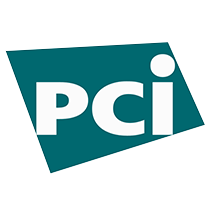A new kind of March Madness!
ART
Content Courtesy of: artnews.com
Written by: ALEX GREENBERGER
Prized Van Gogh Painting Stolen from Dutch Museum Closed Because of Coronavirus

Vincent van Gogh, The Parsonage Garden at Nuenen in Spring, 1884.
HANDOUT/MARTEN DE LEEUW/EPA-EFE/SHUTTERSTOCK
On Monday morning, an alarm went off at the Singer Laren museum in the Netherlands. When guards rushed over to check what had tripped it, they discovered that something terrible had happened: a prized painting by Vincent van Gogh was missing.
The Associated Press reports that a thief or thieves have made off with the Dutch Post-Impressionist’s 1884 painting The Parsonage Garden at Nuenen in Spring, which had been on loan to the Singer Laren from the Groninger Museum voor Stad en Lande in the Netherlands. Forensics specialists and experts are currently investigating the theft, which took place while the museum was temporarily closed because of the ongoing coronavirus pandemic. Exactly how the work was removed is still unclear, though local police said that whoever stole the work had to smash a glass door to gain access to the museum.
an Rudolph de Lorm, the Singer Laren’s director, told AP, “It is very bad for the Groninger Museum, it is very bad for the Singer, but it is terrible for us all because art exists to be seen and shared by us, the community, to enjoy to draw inspiration from and to draw comfort from, especially in these difficult times.”
While the work’s value was not immediately announced by the Singer Laren or the Groninger Museum, the van Gogh painting is a valuable one made early in the artist’s career prior to his artistic breakthrough two years later in France. Parsonage Garden, which shows a brushy figure standing in a garden, with a church in the background, was made during a brief period when van Gogh lived in the Dutch city of Nuenen, where the artist’s father served as a pastor in a parish.
Layoffs, Furloughs, and Pay Cuts: A Guide to Major U.S. Art Museums’ Coronavirus Closure Plans
Content Courtesy of: artnews.com
Written by: ALEX GREENBERGER
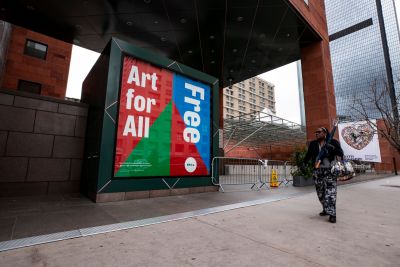
The Museum of Contemporary Art Los Angeles laid off its entire part-time staff, with potential plans to rehire workers once the pandemic ends.
Most major U.S. museums have said they will remain closed indefinitely because of the coronavirus. With operations grinding to a halt, institutions are beginning to announce layoffs and alterations to workers’ pay schedules. Below is a guide surveying those announcements.
Last update: 3/31/20, 8:30 a.m.
California
— The Broad: The Los Angeles–based private museum will pay staff members who can’t work remotely until at least April 8.
— Los Angeles County Museum of Art: Officials at one of L.A.’s biggest institutions plan to keep paying all hourly and part-time employees for the whole time the museum is closed.
— Hammer Museum: On March 24, 150 part-time student workers were laid off at the Hammer. The museum said the laid-off workers would receive pay through April 10. (The Hammer is affiliated with the University of California, Los Angeles, which will not hold classes on its campuses through at least early June.)
— Museum of Contemporary Art Los Angeles: Also on March 24, MOCA laid off its entire part-time staff. With its part-time employees representing 97 people out of its 185-person staff, that means the museum cut its workforce in half. MOCA has said it is hoping to bring its part-time workers back after the closure ends. Laid-off employees are to be paid through the end of March.
— San Francisco Museum of Modern Art: Working under the expectation that it will have to be closed through the end of June, the museum plans to lay off 135 on-call staff members on April 8. (These workers have been paid since the museum closed in mid-March.) And, starting on May 1, nearly 200 staff members will have their schedules reduced or will be furloughed. SFMOMA will continue to cover these employees’ health care benefits through June 30.
— Yerba Buena Center for the Arts: The San Francisco museum has made a public commitment to pay its employees for as long as possible.
Massachusetts
— MASS MoCA: Based in North Adams, the museum said it would lay off 120 of its 165 employees. All employees will receive full payment through March 27. After that, until April 10, all workers will receive 70 percent of their normal pay. Laid-off employees will be covered by the museum’s health care plan through July 31.
New York
— Metropolitan Museum of Art: Widely regarded as the role model for institutions across the nation, the Met has committed to paying all of its employees through April 4. At the end of March, the Met extended that deadline for payments until May 2, saying in a statement, “It is the best we can do in a rapidly evolving situation.” As of March 20, the museum was still considering whether it would have to lay off or furlough any employees.
Ohio
— Akron Art Museum: Located an hour outside Cleveland, the museum said it would impose pay cuts—department heads’ wages would be cut by 10 percent, and another 12 employees would receive a 5 percent pay cut. Twelve more employees will be reclassified from full-time to part-time.
— Cleveland Museum of Art: On March 26, the CMA said it would furlough all of its part-timers and cut the wages of all non-unionized staff by 11 percent–15 percent. Any forthcoming projects with contractors were suspended.
Pennsylvania
— Carnegie Museums: The Pittsburgh-based consortium of museums—which includes the Carnegie Museum and the Andy Warhol Museum—said that it would furlough more than half of its employees. About 75 percent of those workers are part-timers.
From Makeshift Studios to Webinars, the Art World Reinvents Itself Under Quarantine
Content Courtesy of: artnews.com
Written by: ZACHARY SMALL
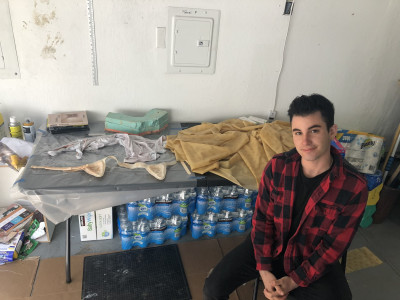
After abruptly departing New York, where he is in school at Columbia University, M.F.A. student Joseph Liatela set up a makeshift studio in his sister's garage.
Even though there will probably come a time when the coronavirus pandemic recedes into memory, the economic shutdown caused by it is likely to impact the art industry for years to come. Last week, the U.S. Department of Labor reported that 3.3 million Americans applied for unemployment because of the pandemic. Thousands of those Americans work in the cultural sector for museums, galleries, art schools, and other cultural organizations.
Even the wealthiest institutions are struggling to survive. The Metropolitan Museum of Art in New York has projected a $100 million loss in revenue. Last week, the Carnegie Museums in Pittsburgh said it expected deficits of $1.4 million per month of closure. The consortium consequently announced pay cuts as high as 30 percent for senior staff and a temporary furlough for around 550 employees—just over half its workforce—for the anticipated two-month shutdown.
But most institutions operate on razor-thin budgets, and according to a 2018 survey by Southern Methodist University’s DataArts center, arts organizations have seen a decrease in working capital since 2013—meaning they lack the liquid assets necessary to cover operating costs.
The precarity the industry faces is best exemplified by the people behind it. Last week, ARTnews spoke with displaced artists, laid-off workers, and museum executives making tough decisions about their futures. These are their stories.
Alexandra Ivanova
Former Hammer Museum employee based in Los Angeles
Two years ago, Alexandra Ivanova joined the Hammer Museum in Los Angeles as a frontline ambassador. She enjoyed welcoming visitors into the building and assisting with public programs; it was a welcome distraction from her science classes at UCLA that would help pay for graduate school. In September, the 21-year-old student was promoted to museum experience lead. This March, Ivanova was laid off alongside nearly 150 other student employees.
“It’s sad because we know that the museum has the money,” she said, “but for the administration, saving costs seems more important than worker lives.”
Ivanova was especially worried about her immigrant colleagues who no longer have jobs and will not be able to access relief funds from the federal government because of their citizenship status. She estimates that about a third of her laid-off coworkers will be affected. “They don’t know what will happen, if they will be deported, or if they can find another source of income,” she added.
As a graduating senior who is financially independent, Ivanova worries about how she is going to pay rent. She is immunocompromised, which limits her ability to work during coronavirus. She had recently decided to matriculate into a public health masters program at Yale University, but now she might defer because of the costs.
“I want some acknowledgment from the museum of the fact that it’s going to hurt a lot of people,” she said. “You are subjecting people to huge hardships in the middle of a literal plague.”
Michelle Moon
Former Tenement Museum employee based in Atlantic Highlands, New Jersey
Before the coronavirus outbreak, Michelle Moon was chief program officer at the Tenement Museum in Manhattan. She would wake up at 6:30 a.m. to prepare for her hour-long commute from New Jersey to the institution, and her high-velocity days there mostly consisted of meetings about how the museum could further develop and collaborate with other organizations.
Now that she’s been laid off alongside 12 other employees at the museum, she’s trying to keep some semblance of the old routine. The mornings are spent surveying the latest news from other museums about closures and layoffs. She interacts with hundreds of her colleagues online, forming webinars and working groups about how the art industry might resurrect after the shutdown.
“I think of the day in chunks and sign up for opportunities,” she said. “It helps to create some normalcy.” She tries to regiment her days of quarantine with workouts and meals. And she remains steadfastly optimistic.
“Museum managers should see that this is an opportunity to rebuild healthier work structures and attempt to make jobs more supportive,” she explained. “Maybe there will be fewer jobs but better ones. More benefits and fuller employment. The pandemic will change the way we work inside our institutions.”
Joseph Liatela Columbia University M.F.A. student who relocated to San Francisco
Joseph Liatela could see the writing on the wall. He bought a one-way ticket home to San Francisco, leaving behind his studio at Columbia University in New York, where he is studying for his M.F.A. degree in visual art. He stuffed what he could into a luggage bag: silicones, metals, a sketchbook, molds, small sculptures, and other materials.
“My main concern was to be with my family,” the 28-year-old artist explained. “I decided to leave a couple days before Columbia officially closed.”
Back at his studio, Liatela would often spend all his time in the studio, typically arriving there around 9:30 a.m. He would work through the night, arriving back at his apartment usually around 2:30 in the morning. Now isolating on the West Coast, he has created a makeshift studio in his sister’s garage and used this time as an opportunity to work on less laborious projects like videos and research. Online classes for his semester start soon.
“It’s been difficult getting resituated,” he said. “And part of this process is mourning. We need to mourn that this is not how things should be. People shouldn’t feel so much pressure to make, make, make.”
Jessimi Jones Springfield Museum of Art executive director based in Bellefontaine, Ohio
When Jessimi Jones became executive director of the Springfield Museum of Art in Ohio this past January, she never imagined that her first few months on the job would involve crisis management and a temporary shuttering of her workplace. Like the majority of museums in the United States, hers is a small operation.
“Within the last two weeks, I sat with the board to identify a realistic timeline for the museum,” she explained. “We went line item by line item to see where we will realistically have a shortfall, what expenses we can save, and what the gaps are that we need to fill. Within a few days, our board has given generous donations, but we still have not yet filled all the gaps.”
Her appointment at the museum was supposed to be something of a homecoming after working at the Philbrook Museum in Oklahoma for more than six years. Jones grew up in Bellefontaine, Ohio, about 40 minutes north of Springfield. She now finds herself quarantined at her parents’ house, sharing her childhood bedroom with her husband and daughter. Because the museum doesn’t have full-time security, she finds herself going into the empty museum regularly to check mail and survey the building.
The Springfield Museum has eight part-time employees; Jones made the difficult decision of laying off three staff members at the front desk who each worked a few hours per week. “It’s been particularly challenging and stressful,” she said. “But I feel positive that we are going to use this time to have things ready for when we reopen our doors and welcome people back in.”
No, We Are Not All Edward Hopper Paintings Now
Content Courtesy of: artnews.com
Written by: ALEX GREENBERGER
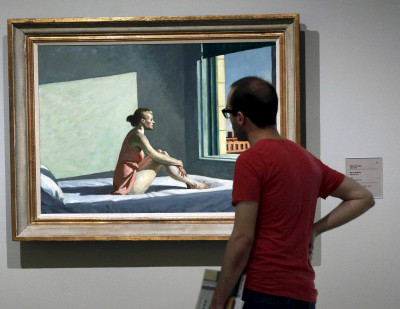
A museum visitor looking at Edward Hopper's Morning Sun (1952).
About two weeks ago, Edward Hopper’s art started enjoying an expected revival—not in a museum but on Twitter. “We are all edward hopper paintings now,” declared Michael Tisserand, a New Orleans–based writer who, in a viral tweet that has since racked up hundreds of thousands of likes, assembled four images of Hopper works featuring lonesome-looking souls in bare indoor settings.
The sentiment struck a chord, with the prominent art critic Jonathan Jones even penning a full-length essay on it for the Guardian. So moved was he by the notion of Hopper’s paintings now that Jones wrote, “We choose modern loneliness because we want to be free.”
But therein lies a difference between Hopper’s forlorn subjects and so many of us right now. They choose to live in modernity and find themselves alienated because of it. We choose to simply try to stay alive in the world today and a pandemic that has so far killed more than 36,000 worldwide is keeping us captive. We are not all Edward Hopper paintings now. If only we were so lucky.
True, Hopper’s late-career paintings capture a moodiness and a melancholy that is distinctly of our moment. They often feature affectless individuals looking out windows or staring into the distance, gazing at nothing in particular. They are rendered in drab, un-showy colors, and many art historians have praised them for their atmosphere. (Even if some during the mid-20th century, when Hopper was in his prime, did not: Clement Greenberg, who famously sang the praises of the Abstract Expressionists, once wrote, “Hopper simply happens to be a bad painter.”)
Hopper’s subjects in stasis were actually always somewhere in the middle of a slow-motion action. He often said the protagonists of his paintings were caught in moments of “moving on,” though where to is not always (or ever) clear. When he shows a woman in a slip sitting on a bed and vacantly looking out at an urban landscape, as he does in 1952’s Morning Sun (now in the collection of Ohio’s Columbus Museum of Art), it is possible that, after the instance in which Hopper has depicted her, she gets up and goes about her day. Even if her depression lingers, at least she leaves the house—unlike so many of the socially distanced citizens of the world right now.
Though it would be hard to describe Hopper’s paintings as being in any way uplifting, one could say they are faintly optimistic. Even his most desolate imaginings are suffused with soul, and many of his daytime scenes pool with sunlight that pours in from windows. That longstanding interest in illumination stems from his childhood, when Hopper would take pleasure in seeing the sun come into the upper level of his family’s house in Nyack, New York.
“There is a sort of elation about sunlight on the upper part of a house,” the artist once said. In that case, let us all make like Hopper paintings and take pleasure in light—the smallest but also biggest of things—for now.
Curator Hans Ulrich Obrist Proposes Massive Public Art Project in Response to Coronavirus
Written by: Tessa Solomon
Content Courtesy of: artnews.com
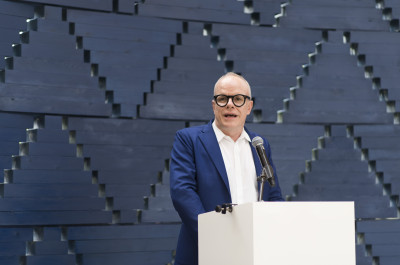
Hans-Ulrich Obrist, the artist director of the Serpentine Gallery.
As many around the world band together to launch coronavirus relief funds, curator Hans Ulrich Obrist has revealed his own idea to help foster art-making in the time of a pandemic: a vast public arts project on the scale of Franklin D. Roosevelt’s Great Depression–era work-relief programs. In detailing his plans to the Guardian on Monday, Obrist cited cornerstone of Roosevelt’s New Deal—the Public Works of Art Project and its successor, the Works Progress Administration, which employed more than 8 million Americans and is partly credited with launching the careers of Jackson Pollock and Mark Rothko—as one of his key inspirations.
“With the WPA, they went out into the community: artists got salaries and were able to research and create work during the New Deal era,” Obrist, who serves as artistic director of London’s Serpentine Galleries, said, per the Guardian. “It gave many people their first real jobs and commissions.”
From 1935 through 1943, artists enlisted by PWAP and WPA produced roughly 15,000 public artworks, including murals, motivational posters, and sculptures for government buildings. Pollock and Rothko, working as muralists, were joined by Abstract Expressionists Willem de Kooning and Lee Krasner, who were then at the start of their careers.
“It’s such a fascinating project when you consider where we find ourselves now, both in terms of supporting the economy and the importance of helping and caring about artists,” Obrist said. “The U.K. government should do something like this.”
As of March 30, the U.K. has recorded more than 19,000 confirmed cases of coronavirus—including the British Prime Minister Boris Johnson—and 1,228 deaths. Like many others worldwide, the country has shuttered all nonessential businesses, dealing a financial and creative blow to galleries and museums. Last week, the Arts Council England announced plans for a $190 million emergency relief package which will offer about $25.8 million in cash grants for individual artists and freelancers.
Obrist added that, when the outbreak was finally under control, arts organizations “need to go into communities with art which don’t usually have access to it. In this time of crisis, it’s important that museums think about how they can go beyond their walls and reach everyone.”
ADVERTISING
Digital ad growth will fall to single digits thanks to pandemic: Magna
Content Courtesy of: campaignlive.co.uk
Written by: Rahul Sachitanand
And that's the good news, according to a Magna Global report, as the crisis hammers spending across all formats.

Global digital advertising is likely to slow down to single-digit growth this year, compared to over 20% per year in recent years, according to a new report from Magna, the centralised IPG Mediabrands resource. However, digital media will likely be the least impacted form of media during the crisis, due to the acceleration of digital media usage and ecommerce during the outbreak.
According to Magna's report, among linear ad formats, TV will remain relatively resilient due to pre-existing spending commitments and the fact that its core CPG/FMCG clients will be relatively unscathed by the outbreak and the economic slowdown. While TV viewing is reportedly growing as people isolate at home, a shortage of fresh programming and the cancellation of live sports events may ultimately limit overall growth, Magna says.
Radio ad sales may suffer more, as automotive commuting stops for weeks, and OOH media sales will be severely hurt during the outbreak as train stations and highways remain empty. OOH media may recover faster than other media, however, due to its strong performance and client mix (technology).
Early data from China, South Korea and Italy suggests significant increases in TV viewing and digital media consumption.
When WFH rules and quarantines are established on a national scale, linear TV viewing increases over 10% while the audience for news programs and news channels grows by 30% or more. Digital media consumption, especially social media and digital video, also increases by up to 10%, Magna data shows.
Meanwhile, in terms of demand, the agency says it will update its detailed media owners’ Net Advertising Revenues (NAR) forecasts in early June based on media companies Q1 earning reports to be published in April, and reports from local trade organisations. This will also give Magna a clearer outlook on the pandemic and the economic outlook.
Elsewhere, the report report contends that the quarantine and social distancing policies are generating changes in attitudes, social norms (remote work, remote education), consumption (acceleration of e-commerce and online services), and media consumption (surge in TV viewing, OTT usage, and digital media). These shifts are likely to (at least partially) outlast the outbreak.
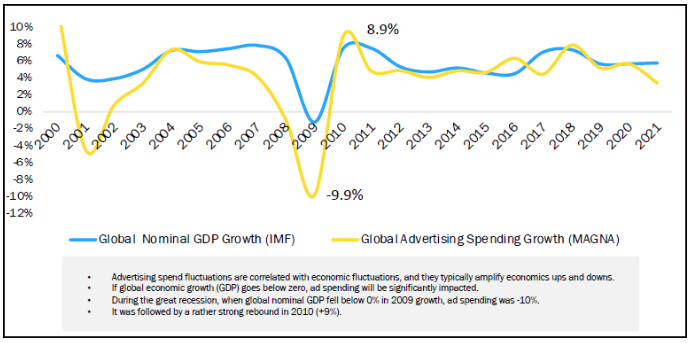
With COVID-19 now a global pandemic, many industry sectors may decrease marketing and advertising spending this year as a result of slower sales and profits.
Magna expects the impact on revenues to be severe for the hospitality sector, moderate for retail and automotive, mild for consumer goods and potentially positive for ecommerce and SVOD. Magna has made a four-tiered forecast for adspend. The most severe cutbacks, the agency says, will be sectors such as travel, cinemas and other related leisure services, which will see demand for their offerings crumple to zero or near zero and many businesses go under.
The second "significant" category, which will see a strong slowdown and a decent recovery, includes retail (mild impact for grocery shops, severe for department stores, positive for ecommerce) and automotive and beauty businesses. Mildly hit businesses include technology, telecoms, pharma, food, drinks and personal care. On the other hand, some categories will see positive growth in ad spending. These include household goods (some toiletries are seeing a temporary surge in sales), home entertainment (SVOD, OTT), e-commerce and delivery services and cloud computing services.
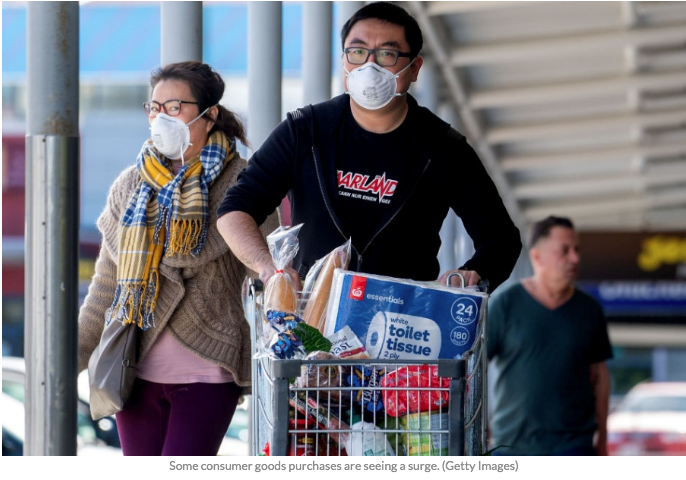
While the COVID-19 epidemic seems to be slowing in China, which shows that extreme isolation works and curbs the contagion within four to six weeks. Europe and North America are now facing at least five weeks of quarantines and business closures that will hit the economy, before business gradually comes back to normal.
For marketers, this means they are looking at a global recession in the first half (negative GDP growth in Q1 and Q2) to be followed by a recovery in the second half. If so, the global economy may stagnate in 2020, instead of growing by 3% as previously expected.
However, in terms of consumer sentiment, COVID-19 may have significantly accelerated the decline of several economies. Western Europe, where the economy was already slowing down before the outbreak, especially in Western Europe. China has already experienced negative growth in the first quarter for the first time in 40 years, and full-year growth is now expected to be between 3% and 5%, compared to 7% in recent years, prompting muted forecasts there and worldwide.
Publicis Groupe fly people home to be with families amid COVID-19 chaos
Written by: Oliver McAteer
Content Courtesy of: campaignlive.co.uk
The holding company is also accelerating the roll-out of Marcel.

More and more employees of Publicis Groupe are taking the holding company up on its offer to fly them home to be with their families amid the coronavirus disruption.
CEO Arthur Sadoun said he is pleased to learn staff are taking advantage of the invitation as he addressed everyone on Sunday for the third time since COVID-19 took hold of the economy.
The leader said that Publicis is accelerating the launch of Marcel so its employees can be better connected.
"We realized that today we not only need to fight the virus, but also the isolation it is causing," he said. "Staying strong together in this period is going to be vital. Not only for our business, but more importantly for your well-being.
"This is why we have decided to advance the launch of Marcel. We move fast as there is an urgency to keep us all connected. It will now be available for the entire group by the end of April. We will start in the U.S., where Marcel will be available to 30,000 people there. It won’t be perfect -- there will be some bugs -- and it will keep evolving. But it will unite us, at a time when we need that the most."
Meanwhile, 3,000 Publicis leaders will come together (virtually) at the end of this week, with a main theme of addressing client relationships.
Sadoun explained: "When it comes to our clients it is clear everyday that it has never been more important to be on their side. We need to act differently with them today and tomorrow, and I want to make sure we start immediately."
He added: "I want to thank you all for your courage and the incredible engagement you’ve shown at this time."
LIVING ON THE EDGE: HOW A SMALL AGENCY TURNED INTERNET SCARCITY INTO A CLIENT OPPORTUNITY
Content Courtesy of: adage.com
Written by: Lori Bower
Kansas shop proposed WiFi parking lots to broadband provider

To overcome slow rural internet at their homes, Lori Bower and Kim Baldwin upload client projects from a public WiFi parking area in Inman, Kansas, while their children do school work. (Hatches temporarily open for viewer pleasure only.)
Living on the Edge is a weekly series exploring how small agencies have overcome adversity and applied creativity, ingenuity and hard work to solve a business problem. This first installment is about how a Kansas shop helped kids continue learning virtually during the coronavirus outbreak and turned it into a win for a client.
I have a five-person agency called BowerComm in Hutchinson, Kansas (I boomeranged to Chicago agencies and came back 10 years ago to live on the family farm). By Sunday, March 15, we’d decided to work from home due to the coronavirus outbreak, so we started that week with a Skype status meeting. Two of us live on farms—17 miles from the nearest McDonald's, to give you a sense of “ruralness”—and we realized we were going to run out of hot-spot data in short order. And what we have out here is 10-12 mb/sec, at best.
This led us to an idea for our client IdeaTek, a local broadband provider whose mission is to bring better access to rural areas. (Unfortunately, they don’t offer service where I live!) During our status call, we could see an emerging need for drive-up WiFi parking lots. People in our situation were going to need access, and the places that usually offer it (libraries, coffee shops) were closing. So, we pitched the idea to them right after we got done with our meeting—and they started talks immediately about how to implement it.
Little did we know that the next day, Kansas would be the first state to cancel “normal” school for the remainder of the term. School districts—which were mostly all on spring break—started scrambling to take learning online in a place where up to 25 percent of students don’t have home internet access beyond a cellphone.
Our idea, delivered at exactly the right time, meant that IdeaTek was able to host a conference call for the schools and communities they serve on Wednesday. By Wednesday afternoon (March 18) they had a beta parking lot site. And by Sunday they had nine free public WiFi parking lots in five communities. The tally stands at 22 locations as of March 27.
We helped IdeaTek get the word out with a press release, social media and landing page over that first weekend, freeing them to handle the flood of inquiries from schools, businesses and residential customers concerned about having access.
Two days ago, I maxed out my Verizon jet pack 15 GB allotment, meaning it was throttled to 600 kb/s (impossible to send anything at all). Today, I maxed out my parents’ jet pack. Fortunately, no one is at our office, so it appears I will be working from there alone until my data plan resets … assuming my babysitter doesn’t fall victim to COVID-19 quarantine. Clearly Disney+ is out of the picture for entertainment at home.
Do you have a story to tell about how your small shop overcame adversity and came out stronger? Click here to learn more about out new series and to find out to enter our Ad Age's Small Agency Conference & Awards.
BUSINESS
AMAZON IS TEAMING UP WITH LYFT ON RECRUITING ITS DRIVERS AS RIDE-HAILING DEMAND DROPS
Lyft is also suggesting its drivers install plastic barriers in their vehicles
Written by: Jeenah Moon
Content Courtesy of: adage.com

A Lyft sticker on a vehicle in the Times Square neighborhood of New York City.
Amazon is teaming up with Lyft on recruiting the ride-hailing company’s drivers to deliver packages and groceries as the coronavirus pandemic keeps people indoors.
In an email to Lyft drivers Friday, the company referred them to work opportunities at Amazon as grocery shoppers, warehouse workers or delivery people “as a way to earn additional income right now.” The message from Lyft, which came in response to plummeting demand for rides and economic hardships facing drivers, also indicated that drivers could qualify for compensation in the U.S. stimulus bill.
While Amazon and Lyft have competed for workers in the past, the surge in grocery and package deliveries has reset that dynamic. Amazon said last week it plans to hire 100,000 people and give U.S. workers a temporary $2-an-hour raise in an effort to meet the crushing demand. However, Amazon is under fire for not doing enough to protect its workers, some of whom have tested positive for the coronavirus. The company said it has stepped up cleaning in its warehouses and is giving guidelines to workers about maintaining safe distances.
Declines in the ride-hailing business are sharp. Recent estimates put a drop in fare prices at as much as 11 percent and demand at about 20 percent. Uber, the largest ride-hailing operator, can partly offset the shortfall with its restaurant delivery business, which is seeing an uptick. Lyft doesn’t deliver food.
In the email to drivers reviewed by Bloomberg News, Lyft suggested that in addition to seeking immediate work with Amazon, drivers could sign up to help deliver groceries, COVID-19 tests and other medical supplies as part of future partnership programs. Lyft said more than 100,000 drivers had already signed up.
Lyft urged drivers to follow federal health guidelines and suggested installing a plastic barrier in their vehicles, along with a link to buy such a kit on Amazon.
A Lyft spokeswoman declined to specify the terms of its arrangement with Amazon.
OPINION: COVID-19 WILL CHANGE CONSUMERISM FOREVER
Brands that fail to serve the greater good could lose customer loyalty
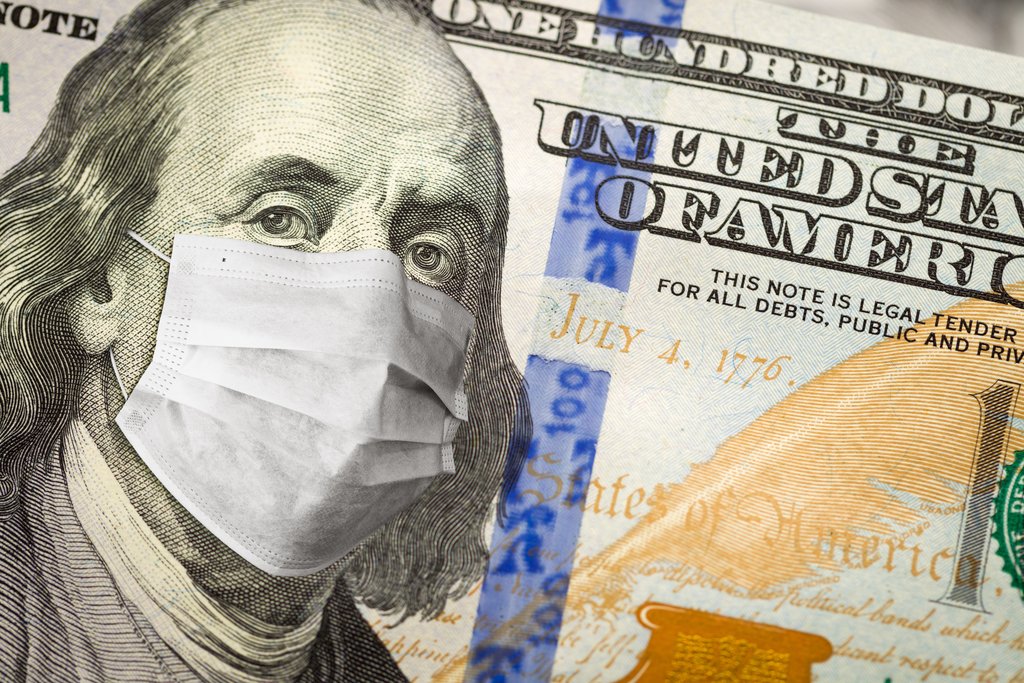
Written by: Lyndsey Fox.
Content Courtesy of: adage.com
There’s no question that COVID-19 will transform the world; we might never return to life as it was. For the first time in my memory, we’re not in a situation where change is coming—it’s here. And consumer brands might face the whiplash of this shift more quickly than any other group.
As far back as I can remember during my time in advertising, we told clients that the world is changing and that they need to change with it—or be left behind. That they will see new competitors from tertiary categories, new technologies, new mediums—all leading to new consumer needs not as clear as in the past. We have continually pushed to find elasticity in offerings, to be as relevant as possible and to seek out new markets and optimize the existing. It has always been our job to be not just partners in communication, but to be strategic partners in optimization of consumption at all levels.
But no marketer could ever have imagined how expedited and acute these changes would become through the pervasiveness of COVID-19. And while we’re rightly busy grappling with the virus’ impact on our healthcare system and its devastating economic implications, given what I do for a living I have to ask myself: How will this change our overarching idea of consumerism?
Culturally we find ourselves at a crossroads. Where we once were consumers, we are now connectors and protectors—trying to determine how to sustain our livelihoods. We are worried about and in constant communication with our loved ones who are sequestered by themselves; we fear for their health and for their emotional well-being. We are evangelists of the simplest of practices—staying at home and washing our hands—behaviors that seem so commonplace until they are mandated.
It’s even stranger to consider what’s happening on our social media platforms. Instagram until two weeks ago was a black hole of consumerism, a place where you could never have enough to keep up with the Joneses—not enough things, not enough meals out and certainly never enough followers. Today, in this “shelter in place” world, we find ourselves in a position where—if we’re very lucky—we have what we need and that’s enough. If we’re fortunate, we’re able to finally experiment with making sourdough loaves to feed our families or have a guitar to strum while they sing along. At least, that’s what my Instagram feed tells me.
While the division of wealth and privilege is still quite clear as I scroll, the dichotomy of subject matter and purpose of platform is not lost on me. Instagram and other social media channels innately romanticize all. But when you dig into the purpose of the activities we’re capturing while we’re stuck at home during this crisis, they’re about the protection of our communities, the sustainability of our families’ abilities to support ourselves and ultimately the greater good. We’re planting victory gardens; we’re sewing masks for our healthcare workers on the front lines; and we’re leaving a few eggs on our neighbors' doorstep when they run out. As the popular meme making the rounds declares: This is wartime and the enemy is the virus. We will overcome it, but the trauma will remain.
We are facing an uphill battle on the trauma inflicted upon us all: lives lost, devastation of healthcare systems all across the world, coping as best they can with what they have. The overnight loss of income and ability to support your family. The enormous sense of loss at not being able to hug a loved one. Trauma like this pervades our subconscious for generations.
This is why I believe that March 2020 marks the end of consumerism as we’ve come to know it. We won’t forget the new practices that helped us through the crisis. “E pluribus unum” (Out of many, one) may be our country’s motto, but if these last few weeks have taught us anything it’s that it just takes one to protect the many. Today we become aware through the pervasive spread of this virus just how strong our individual actions can be. That staying home is an effort in saving lives. Once we emerge from this, think about transferring that notion to buying power. Imagine the power of individual action, and the strength it gives every single dollar spent.
What does this mean for brands? It means that they just got a new competitor from a tertiary category: community. How brands choose to use that information is up to them, but my recommendation is that they embrace and react to what consumers will be asking themselves: Why am I spending this dollar? Who am I spending it with? And, what greater good will it serve? It is my belief that only then will any loyalty be gained in this new dawn of consumerism.
Tech
How Covid-19 will impact IT and tech spending for 2020 and beyond
Written by: Louis Columbus
Content Courtesy of: cloudcomputing-news.net
Categories
Collaboration, Research, Software, Storage, Trends

The human tragedy the COVID-19 pandemic has inflicted on the world is incalculable and continues to grow. Every human life is priceless and deserves the care needed to sustain it. COVID-19 is also impacting entire industries, causing them to randomly move in unpredictable ways, directly impacting IT and tech spending.
COVID-19’s impact on industries
Computer Economics in collaboration with their parent company Avasant published their Coronavirus Impact Index by Industry that looks at how COVID-19 is affecting 11 major industry sectors in four dimensions: personnel, operations, supply chain, and revenue. Please see the Coronavirus Impact Index by Industry by Tom Dunlap, Dave Wagner, and Frank Scavo of Computer Economics for additional information and analysis. The resulting index is an overall rating of the impact of the pandemic on each industry and is shown below:

Computer Economics and Avasant predict major disruption to High Tech & Telecommunications based on the industry’s heavy reliance on Chinese supply chains, which were severely impacted by COVID-19.
Based on conversations with U.S.-based high tech manufacturers, I’ve learned that a few are struggling to make deliveries to leading department stores and discount chains due to parts shortages and allocations from their Chinese suppliers. North American electronics suppliers aren’t an option due to their prices being higher than their Chinese competitors. Leading department stores and discount chains openly encourage high tech device manufacturers to compete with each other on supplier availability and delivery date performance.
In contrast to the parts shortage and unpredictability of supply chains dragging down the industry, software is a growth catalyst. The study notes that Zoom, Slack, GoToMyPC, Zoho Remotely, Microsoft Office365, Atlassian, and others are already seeing increased demand as companies increase their remote-working capabilities.
COVID-19’s impact on IT spending
Further supporting the Coronavirus Impact Index by Industry analysis, Andrew Bartels, VP & Principal Analyst at Forrester, published his latest forecast of tech growth today in the post, The Odds of a Tech Market Decline In 2020 Have Just Gone Up To 50%.
Mr. Bartels is referencing the market forecasts shown in the following forecast published last month, New Forrester Forecast Shows That Global Tech Market Growth Will Slip To 3% In 2020 And 2021 and shown below:
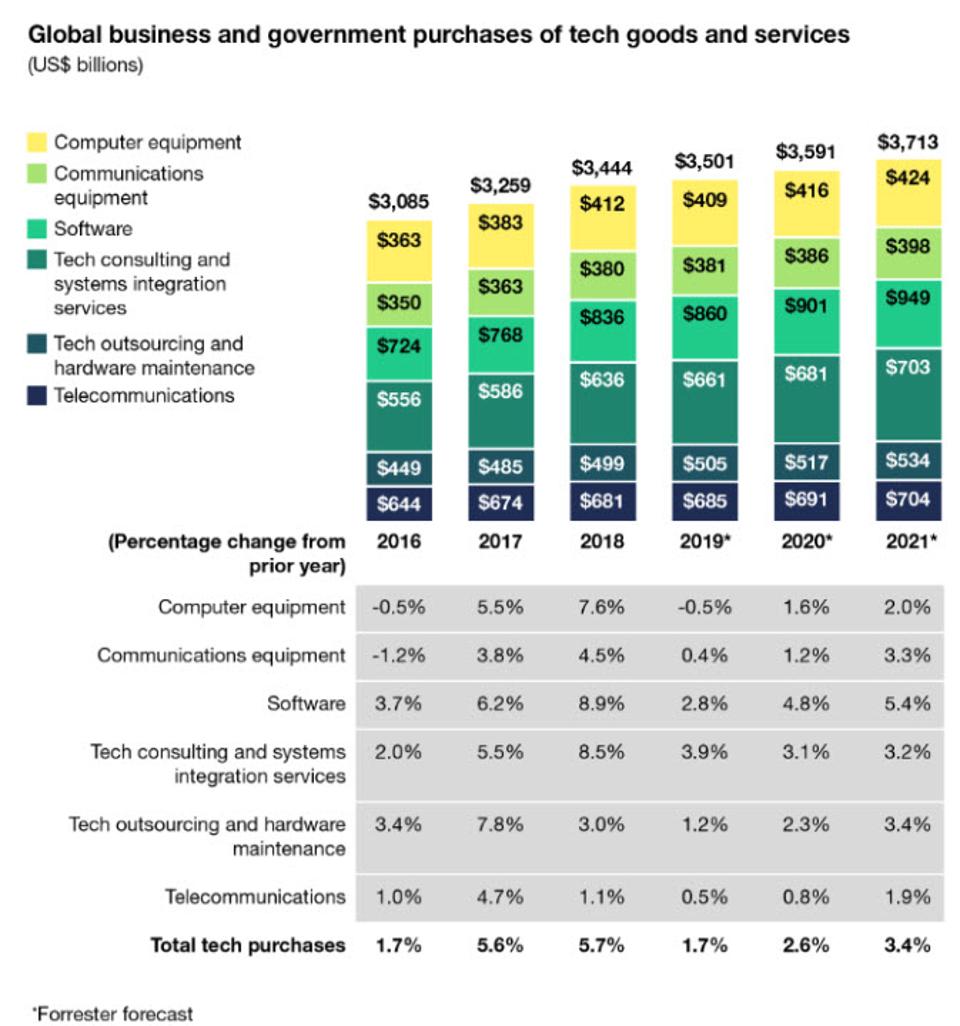
Key insights from Forrester’s latest IT spending forecast and predictions are shown below:
-
- Forrester is revising its tech forecast downward, predicting the US and global tech market growth slowing to around 2% in 2020. Bartels mentions that this assumes the US and other major economies have declined in the first half of 2020 but manage to recover in the second half
- If a full-fledged recession hits, there is a 50% probability that US and global tech markets will decline by 2% or more in 2020
- In either a second-half 2020 recovery or recession, Forrester predicts computer and communications equipment spending will be weakest, with potential declines of 5% to 10%
- Tech consulting and systems integration services spending will be flat in a temporary slowdown and could be down by up to 5% if firms cut back on new tech projects
- Software spending growth will slow to the 2% to 4% range in the best case and will post no growth in the worst case of a recession
- The only positive signs from the latest Forrester IT spending forecast is the continued growth in demand for cloud infrastructure services and potential increases in spending on specialised software.
- Forrester also predicts communications equipment, and telecom services for remote work and education as organisations encourage workers to work from home and schools move to online courses
Conclusion
Every industry is economically hurting already from the COVID-19 pandemic. Now is the time for enterprise software providers to go the extra mile for their customers across all industries and help them recover and grow again. Strengthening customers in their time of need by freely providing remote collaboration tools, secure endpoint solutions, cloud-based storage, and CRM systems is an investment in the community that every software company needs to make it through this pandemic too.
CULTURE
Written by: Ruben Natal-San Miguel
Content Courtesy of: artnews.com
Photographer Ruben Natal-San Miguel Is Capturing a New, Silent New York
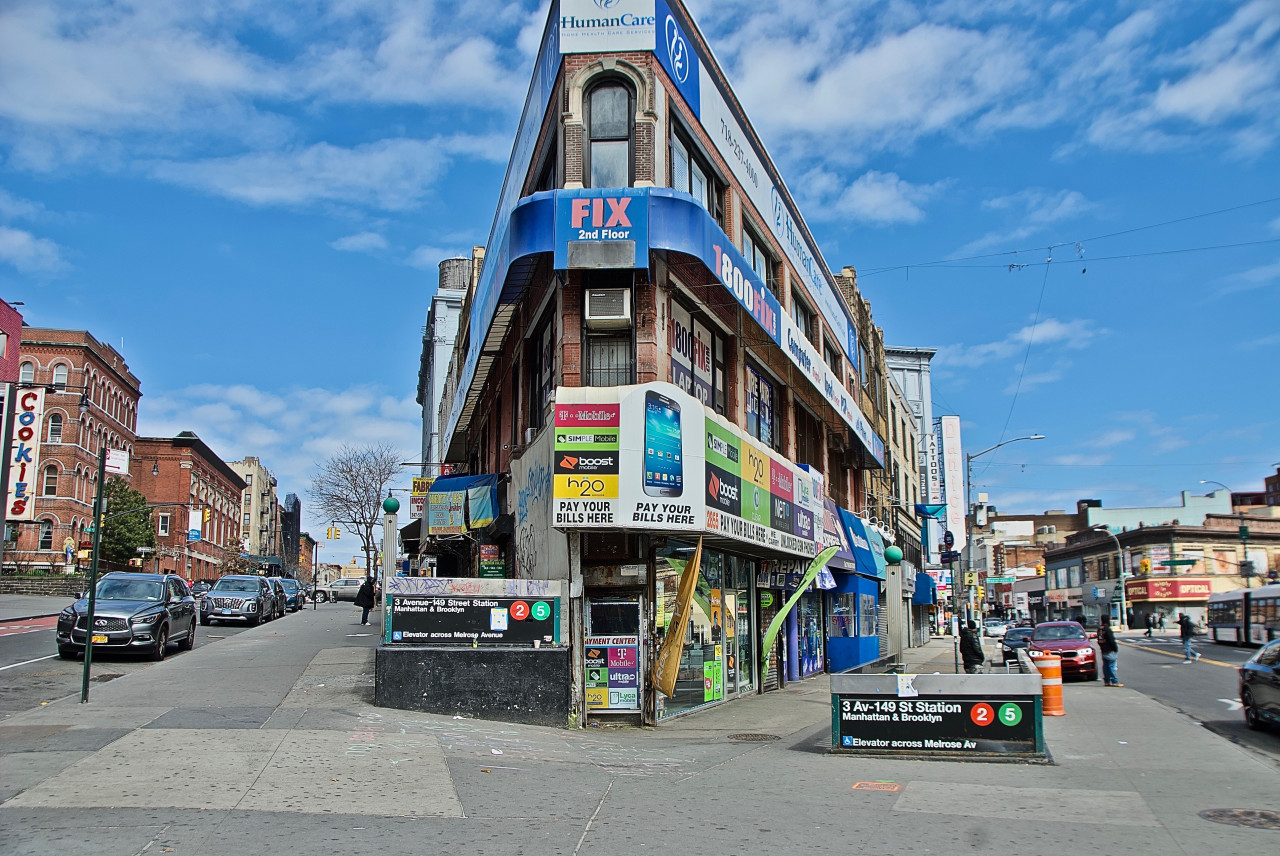
The day photographer Ruben Natal-San Miguel’s exhibition "Women R Beautiful” was set to open at New York’s Postmasters Gallery, the city went dark amid growing concerns over the rapid spread of the new coronavirus (Covid-19). Business deemed nonessential, including bars, salons, art institutions, were among those put on lockdown, which is still ongoing. New York is currently the epicenter of the nation’s coronavirus outbreak; as of March 26, New York State has reported 37,258 confirmed cases and 385 deaths from Covid-19.
Like those left in the city, Natal-San Miguel takes precautions every time he steps outside: gloves, mask, camera. From his home in Harlem, he ventures by foot, often in the sparse bicycle lane. Over the past few days, he's taken walks from the Bronx to Broadway and beyond, in what has become a virtual ghost town, shooting images along the way as part of a new series. In one image, taken from the sidewalk, his camera peers into Central Park, which is disturbingly crowded on a recent sunny Saturday.
“I get nervous when I do this, but I do it," Natal-San Miguel told ARTnews by phone. “It is my responsibility as a documentary photographer to convey what is happening. And with my show at Postmasters closed, this is a way for me to give myself a sense of hope, and therapy, if you want to call it that.”
Natal-San Miguel, who was born in Arecibo, Puerto Rico, is a self-described “people person," known for his vibrant participatory portraits. For his Postmasters show, he was to debut a new series that was a contemporary take—and personal revision—of some of mid-20th-century photographer Gary Winogrand's most iconic images. (The show is accessible in a virtual version while the gallery remains temporarily closed.)
Natal-San Miguel usually keeps in touch with his subjects, trading numbers and sending prints. But for this new, somewhat unexpected project, the subjects are barren blocks and masked New Yorkers scurrying between the bodega and their front door. His long-range camera lens provides a certain amount of intimacy that increasingly feels impossible these days; Natal-San Miguel keeps a distance of between 10 or 15 feet between himself and the passersby his camera captures.
“It's challenging for us all—for me, the subject,” Natal-San Miguel said. “That personal space and human connection is gone. But still, I try to keep the personality and the dignity.”
Content Courtesy of: adage.com
Written by: Paras Griffin
DESIGNER FACE MASKS ARE GOING FOR $200 A POP ON EBAY
The high-end masks exist in something of a price-gouging gray area because they’re luxury products by design

Gwyneth Paltrow posted an Instagram photo Monday on her way back from her local farmer’s market. In it, she’s wearing a black dress and a matching black face mask. Her label of choice for the latter is a Swedish company called Airinum AB.
Designer face masks have been around for at least a decade, a niche market catering to the chronically sick along with frequenters of Burning Man and fashionistas in Beijing. Now, amid the coronavirus pandemic, they are a coveted accessory for wealthy people around the globe. And for others, they’re a new symbol of inequality at a time when protective equipment for medical workers is in woefully short supply.
Airinum and other popular makers of trendy masks, including Cambridge Mask Co. and Vogmask, typically sell products in an assortment of colors and sizes and tout advanced air filtration and memory foam fitting for the wearer’s nose. Unlike paper masks often used by health care professionals, these can be washed and reused.
The products are normally priced at $12 for a basic black Cambridge mask or as much as $69 for a pearl pink Airinum. But those two companies are out of stock until at least next month. Airinums have sold for more than $200 apiece on eBay in the last week and Vogmasks for about $150 on average.
EBay, Amazon and other online retailers have come under pressure for enabling sellers to price gouge on essentials like masks and hand sanitizers. In response, the companies said they would ban such listings. The high-end masks exist in something of a gray area because they’re luxury products by design.
In the eyes of government officials, though, they’re still masks. San Francisco-based Vogmask manufactures all of its products in South Korea, which enacted an export ban this month on medical masks. Wendover Brown, the company’s co-founder, said 80,000 finished and packaged products are waiting in a warehouse near Incheon, unable to pass through customs. “The product is just sitting there, not helping anyone,” Brown said. Vogmask is now exploring options to manufacture in the U.S.
The global mask shortage is a severe problem for medical staff. Apple and Facebook are among companies helping source and donate masks to hospitals, and officials have urged people not to hoard them. Christian Siriano, a prominent fashion designer, and the French workshops of Balenciaga started producing masks to shore up supplies for health care workers.
It’s in this light that Paltrow’s pandemic glamor shot attracted some outrage. In comments on the post, several people chastised the actress for being tone-deaf and urged her to donate the mask to a health care worker and advocate for others to do so. “Medical staff have been begging people to contribute these,” one person wrote. “These should only be available to those on the front lines.”
A spokeswoman for Paltrow declined to comment. On Wednesday, Paltrow posted on Instagram saying she and her husband had donated to the Frontline Responders Fund, which is raising $10 million to get critical supplies to workers combating the virus.
Food
Coronavirus effects will ripple widely through food sector
Written by: Keith Nunes
Content Courtesy of: foodbusinessnews.net

KANSAS CITY — The unfolding impact of the novel coronavirus on public health and the global economy has been dramatic. Reaction to the virus by public and private entities will have a significant short-term impact on some sectors of the food and beverage industry as it spreads in the United States and to the rest of the world.
Foodservice will be hardest hit as more consumers work from home or practice social distancing to slow the spread of the virus. Many restaurants are expected to lose breakfast, lunch and dinner traffic, and the fall in demand will ripple through to the distributors and manufacturers who serve those businesses.
A recent survey by the market research company Technomic, Inc. found more than 3 in 10 consumers say they plan to leave the house less often and to go to restaurants less often or order food or beverages at away-from-home venues less frequently. And among those who say they will not go to a restaurant as often, 31 percent say decreased frequency will last between one and three months.
In China, Starbucks Corp. closed half of its stores in response to the virus. Most of the stores have reopened, but same-store sales were down 78 percent in February when compared to the same period of the prior year. While a single data point, Starbucks’ experience indicates foodservice recovery may be slow.
Similar supply chain ripple effects will occur as more schools and universities close for undetermined periods of time. Suppliers to the institutional market will see demand fall as schools shift to online learning programs.
Producers and food manufacturers also may be impacted by China’s inability to fully honor its commodity purchasing obligations under the phase one agreement signed Jan. 15. China agreed to purchase at least $36.5 billion in US food, agricultural and seafood products in calendar year 2020, but those purchases may be delayed as the Chinese economy and the global supply chain recover from the effects of the virus.
Technomic sees the coronavirus as a “boon” for the grocery business, as almost half of the consumers surveyed said they will stockpile grocery foods and beverages as a substitute for away-from-home meals. The scenario is playing out in a variety of ways. On March 4, the Campbell Soup Co. said it is increasing production and distribution of soups in regions of the United States where it is seeing a spike in sales thought to be related to consumers stocking up on shelf-stable goods. Costco Wholesale Corp. said its February sales benefited from an uptick in consumer demand in the fourth week of the month. The retailer attributed the rise to consumer concerns about the coronavirus and estimated the impact to be 3 percent over the comparable period a year earlier.
Of additional concern to marketers and manufacturers is how the impact of the outbreak may affect long-term consumer behaviors. The longer the outbreak persists, the more likely it is people will try new products or services, whether in-store prepared foods, click-and-collect, delivery, etc. While the immediate effects of the coronavirus are dramatic, residual changes continuing after the pandemic passes could prove transformational for some sectors of the industry.
Free toilet paper among ways restaurants respond to COVID-19
Content Courtesy of: foodbusinessnews.net
Written by: Jeff Gelski

Guerrilla Tacos in Los Angeles is offering an “emergency taco kit” during the pandemic that includes all the ingredients for a four-person taco dinner along with four rolls of toilet paper.
GLADSTONE, MO. — The coronavirus (COVID-19) pandemic has hit the restaurant business hard, which is leading to creative ways to keep sales coming in.
“Clearly this is an industry that is — I don’t even want to say struggling — It’s really tragic what’s happening right now,” said Susan Schwallie, executive director of food and beverage consumption for the NPD Group, a market research and consumer insights company.
Data through March 22 showed total foodservice traffic down 36%, she said in a March 27 webinar organized by The Center for Food Integrity, Gladstone. The decline was 34% for quick-service restaurants and 71% for restaurants in sectors like casual dining and fine dining that do not have carryout or delivery infrastructures in place.
Some high-end restaurants, including steakhouses, are sending out meal kits with instructions showing consumers how to prepare the food stored in the restaurants.
“They need to move out their inventory,” Ms. Schwallie said. “They can’t just have that food sitting there. So that’s what fine dining is doing.”
New tactics are showing up as well among restaurants that offer delivery and carryout.
“I’ve seen some delivery advertisements for ordering takeout, and you’ll get a side of toilet paper,” she said.
The number of people ordering delivery differs by age group. Many in Generation Z are at their parents’ homes because colleges are shut down.
“They are hyper users of digital delivery,” Ms. Schwallie said. “They’re just not doing that right now whereas we’re seeing some older consumers that don’t normally participate come into the fray. So it’s a real mixed bag. One thing that is clear is that delivery capacity will not offset the restaurant closures.”
At the retail level, the NPD group is seeing shopping behavior that is a mix of panic and fear, she said. Growing in sales by triple-digit percentages are items like beans, rice, tuna and canned meat.
Ms. Schwallie said, "Those all to me say, “I am preparing to feed my family for an indeterminate time. I got to have shelf-stable things that are basic, that I can cook from.’"
Shelf-stable bread is in demand. So is flour and sugar as more people bake at home.
Growing in sales by double-digit percentages are popcorn, pretzels, potato chips, chocolate, ice cream and pastries, which signifies a “a tremendous amount of comfort food and snacking,” Ms. Schwallie said.
“We’re trying to figure out how to sustain and feed people as well as looking to food for enjoyment, familiarity and comfort,” Ms. Schwallie said.
Americans Avoiding Restaurants, Buying Guns Amid Coronavirus Pandemic
Content Courtesy of: usnews.com
Written by: Andrew Soergel
A new report from Yelp suggests the coronavirus has increased demand for survival items while decimating restaurants and certain leisure activities.
THE CORONAVIRUS pandemic is upending the U.S. economic landscape and warping consumer behavior as Americans prioritize survival and drop certain kinds of excess dining and leisure spending, according to a new report from Yelp.
The business directory service pooled in-house data to determine which types of shops and industries are suffering most acutely – or, in some cases, seeing the largest surges in interest – as confirmed coronavirus cases spread across the U.S. and a growing number of cities and states enact curfews and close nonessential businesses.
Yelp found that consumer interest in restaurants dropped 54% between March 8 and March 18, though pizzerias and fast food restaurants have seen interest spikes of 44% and 64%, respectively. Yelp measures consumer interest based on user activity such as page views and review postings.
Pennsylvania, Massachusetts and Texas are among several states to order the closure of restaurant dining rooms in recent days. Takeout and delivery options remain available throughout much of the country – and, indeed, Yelp estimates such methods were twice as popular as they usually are as of March 15.
But restaurant closures and a lack of consumer interest are decimating the food service industry, as many Americans self-isolate to avoid contracting and spreading the virus. Restaurant reservation company OpenTable estimates that the number of seated in-restaurant diners in the U.S. was down 91% year over year as of Wednesday. As recently as March 8, in-restaurant dining was down only 2%.
From early- to mid-March, Yelp estimates interest in nightlife businesses dropped 69%, while breweries weathered a 61% decline. Consumers appear to be veering away from establishments that draw crowds, such as yoga studios (down 38%) and bowling alleys (down 43%).
Layoffs are hitting the U.S. economy fast and hard. Economists widely expect initial unemployment claim data published next week to be among the worst in modern history. Last week's one-week jump in unemployment filings already eclipsed anything seen during the Great Recession of the late 2000s.
However, Yelp notes that some establishments have actually seen an uptick in business activity. Guns and ammunition stores have seen a 360% spike in interest, while interest in home fitness and exercise equipment is up 344% as Americans largely remain stuck in their houses.
Separately, a report published earlier this week by Ammo.com indicated ammunition revenue was up 309% between Feb. 23 and March 15, when compared with sales from Feb. 1 through Feb. 22. The site's traffic climbed 77%. The online seller attributes coronavirus concerns for its "staggering statistics."
Per Yelp, food delivery services also enjoyed a 59% spike in activity, while grocery stores saw interest climb 160%. Consumers have been buying out grocery store shelves across the country in a wave of panic purchasing. Supermarkets have seen a short-term demand boom, but over the long haul, shoppers are expected to hunker down and burn through their nonperishable supplies of items such as toilet paper and bottled water – reducing demand for such items over the long term.
"While many industries and companies are feeling the impact of supply and demand shock across the country, some industries are doing well, are hiring now or may begin to hire in the coming weeks," Andrew Challenger, senior vice president of Challenger, Gray & Christmas, said in a statement on Friday, noting that coronavirus-related job cuts have already climbed over 9,000 in the U.S.
"Amazon, which recently announced it was hiring 100,000 new associates, and many grocery stores nationwide are hiring to keep up with demand," he said, also pointing to health care professionals, research scientists, facilities management personnel and trucking and logistics workers as among those most in need to keep up with demand.
Geographically, Yelp notes that states such as California and New York, which to this point have been hit the most heavily by the coronavirus outbreak, have seen the largest upheaval in local economic activity. Impacts are "more muted" in the Midwest and Southeast, likely due in part to differences in population density.
"Every state, though, now reflects, to some degree or another, the new reality of the coronavirus economy," according to the report.
Content Courtesy of: money.usnews.com
Written by: Kristin McGrath
Curbside Pickup Options From Restaurants and Retailers
Businesses are responding to the coronavirus spread with low-contact curbside pickup options.
U.S. News takes an unbiased approach to our recommendations. When you use our links to buy products, we may earn a commission but that in no way affects our editorial independence.
With social distancing becoming a new norm, it's difficult to safely buy food and other necessities amid the coronavirus pandemic.
In response, some retailers and restaurants are opting for curbside pickup and other contactless pickup options to help ensure the safety of customers and employees. Plus, some retailers have offered curbside and low-contact pickup for years and are continuing to do so, even while limiting the open hours inside their stores.
In addition to the national chains below, plenty of local businesses are also rolling out innovative curbside and contactless pickup options. As many small businesses are struggling now, be sure to check out options in your neighborhood or city. And be sure to tip generously when possible, as retail and restaurant workers are being hit especially hard by the economic downturn caused by COVID-19.
Note that the availability of these options is subject to change. Be sure to visit the retailer's or restaurant's site before placing an order:
-
- Applebee's
- Books-A-Million
- Chili's
- Dick's Sporting Goods
- DSW
- Dunkin'
- Potbelly
- The Cheesecake Factory
- Target
- Walmart
Applebee's
The chain has been offering curbside delivery for years. To use it, place an Applebee's to-go order online or via the app. When you receive confirmation that your order is ready, drive to the restaurant, park in a designated pickup spot, respond to the order confirmation text (or tap the "I'm Here" button in the app), and your order will be brought to your car.
Books-A-Million
The chain has rolled out a new curbside delivery option. Pace an online order, select store pickup at checkout and wait for the order confirmation. When you receive the confirmation, drive to the store, call the store's number and ask to have your items brought to your car.
Chili's
The chain has offered curbside pickup for a while now. If you're trying it for the first time, it's easy to get your food without leaving your car. Simply place an order online or via the app. Drive to the restaurant and park in a designated spot with a Curbside Pickup sign. Follow the instructions in your order confirmation or in the app to tell Chili's you've arrived, and the order will be brought to your car.
Dick's Sporting Goods
The retailer implemented curbside contactless delivery on March 18. Customers can shop online, select the "pick up in store" option, drive to the store upon order confirmation status, call the store and select "0" to tell an employee they have arrived for their order. An employee will then bring the order out to their car.
DSW
Stores shut down for customers on March 17. But those who need to buy shoes can still pick them up curbside. Just place an online order, and select store pickup. When you pull up, an employee will bring your order out to your car. DSW is also currently offering 20% off online orders with code SHOPONLINE.
Dunkin'
The chain is expanding curbside delivery to select locations nationwide. If it's an option, you'll see it in the app when you place your order.
Potbelly
The sandwich chain is offering contactless pickup for online to-go orders. Options vary by store. Some locations provide curbside pickup (simply pull up outside and call the store to have an employee bring your order out to you). Others are offering designated pickup stations so that customers can pick up their bags without any human interaction.
The Cheesecake Factory
Curbside service is available for to-go orders placed online. Plus, until April 16, get a free slice of cheesecake when you spend $30 or more on your online pickup order. Use promo code FREESLICE at checkout to get this deal.
Target
Target has offered curbside order pickup for a couple years now via its Drive Up service. Just place an order on the Target app, opt for curbside, update the store when you are on your way and park in a designated spot when you reach the store. Your order will be loaded into your car. Note that certain items, including perishable food, are not eligible for Drive Up orders. Note that Target locations nationwide are also reducing their store hours and are designating the first hour of shopping every day for seniors and others at higher risk for the coronavirus.
Walmart
Walmart has offered curbside grocery pickup for a few years now. To use the service, place your order online, opt for curbside pickup and select an appointment. When you show up at your approved time and park in a designated spot, an employee will load your groceries into your car. If demand for this service is high at your store, you may not be able to get same-day pickup. Note that 24-hour Walmart locations nationwide are closing early.
